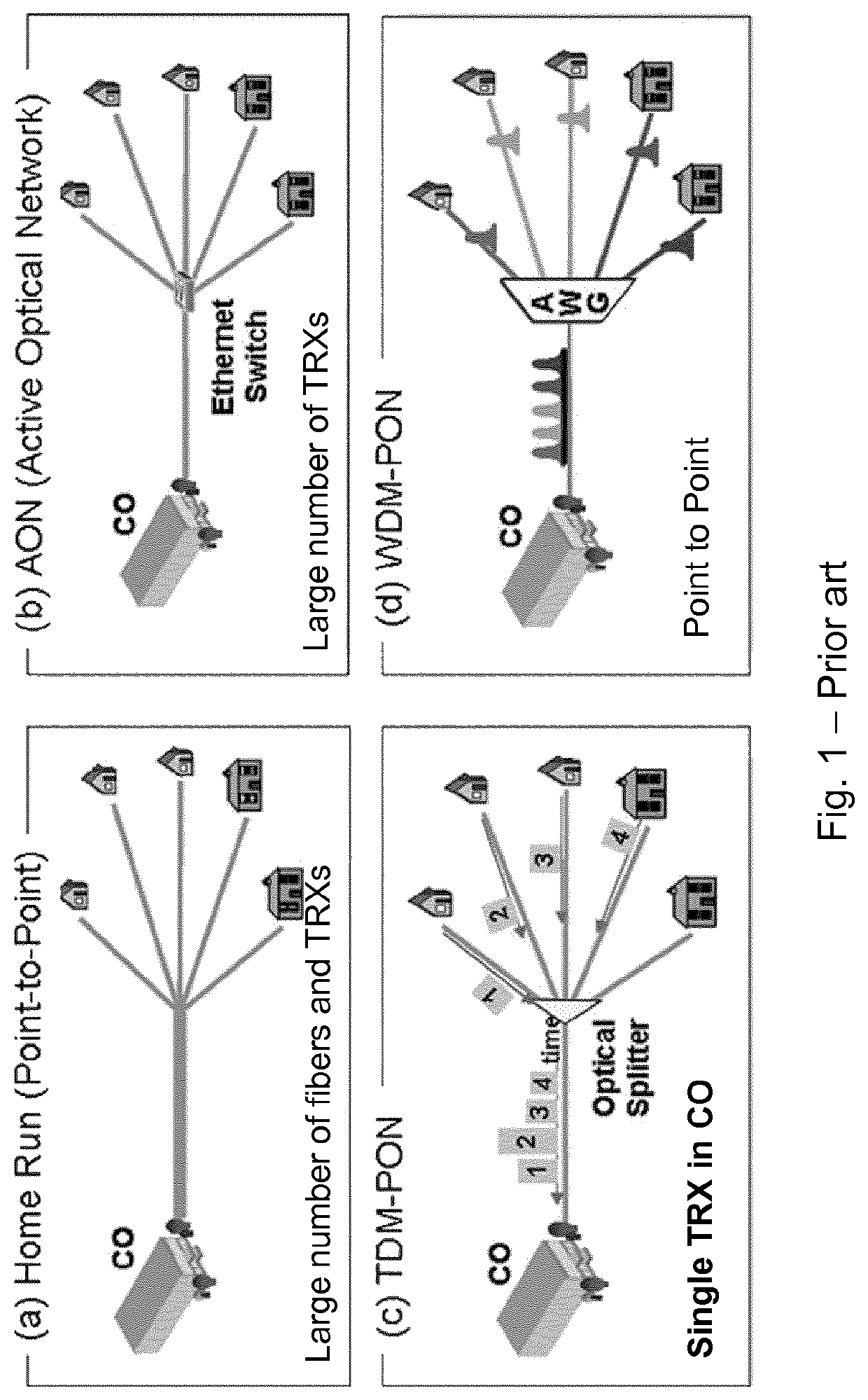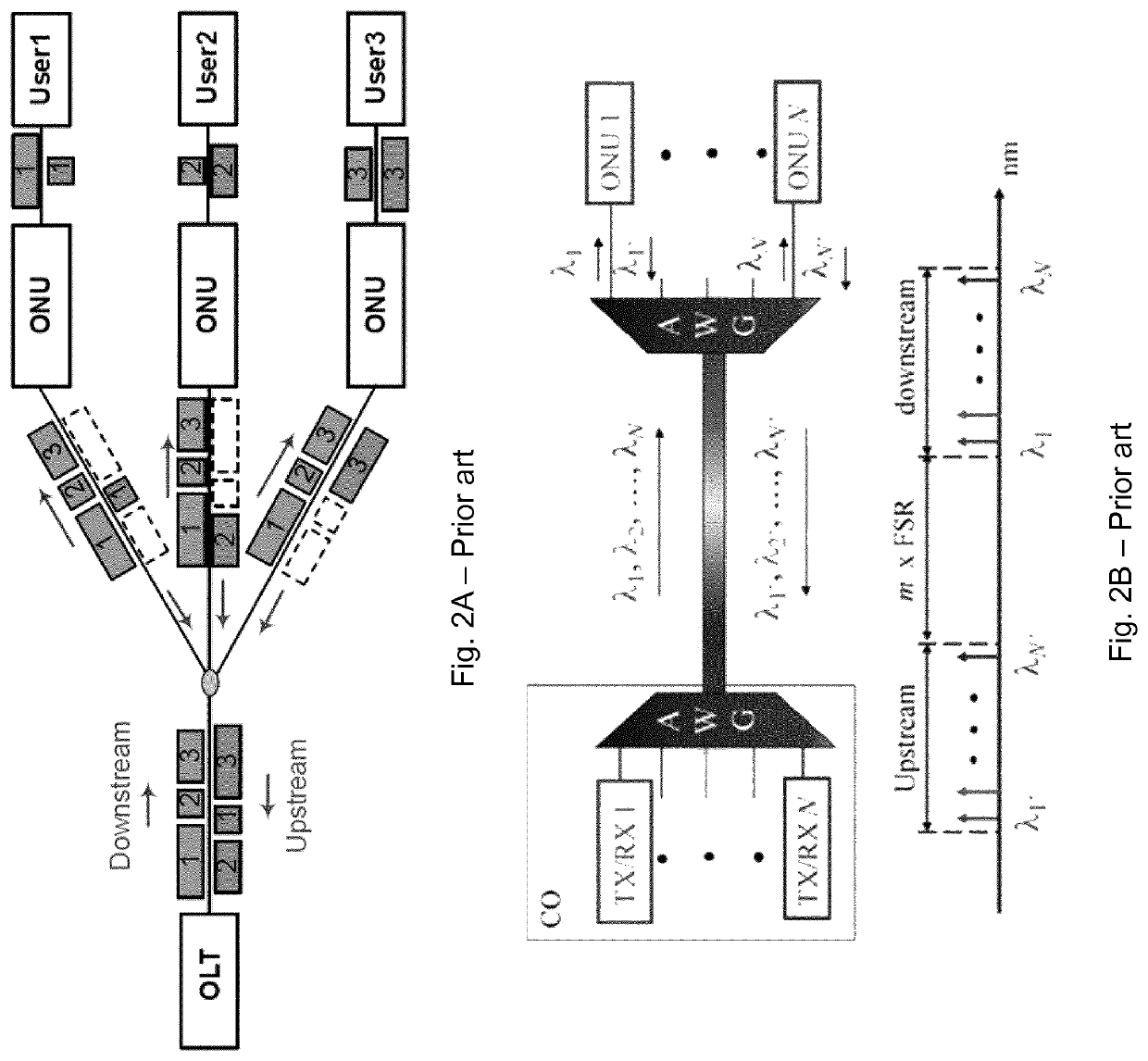Optical line terminal and optical fiber access system with increased capacity
a technology of optical fiber access system and optical line terminal, which is applied in the direction of multiplex communication, electrical apparatus, and wavelength-division multiplex systems, can solve the problems of reducing the serial bitrate beyond 10 gb/s of pon systems, unable to provide any switching or buffering capabilities, and pon technology running out of capacity
- Summary
- Abstract
- Description
- Claims
- Application Information
AI Technical Summary
Benefits of technology
Problems solved by technology
Method used
Image
Examples
example 1
[0101]The presently disclosed time-lens PON approach has been demonstrated experimentally. A 40-Gbit / s PON downstream transmission over 150-km 40-split unamplified SMF-plant has been obtained with a single-carrier OOK transmitter and low-cost 10-GHz APD-based receiver, achieving a power budget of 51.5 dB (35.5 dB / ch.) for a BER=3×10−6. Meanwhile, the same system achieves 128 Gb / s PON over 100 km 64 split unamplified Fiber-Plant using optical TDM technique, showing flexibility and scalability of the presently disclosed scheme in terms of wavelength control and system capacity.
[0102]Principle and Experimental Setup
[0103]One example of the presently disclosed OLT structure / PON architecture is shown in FIG. 3A and this setup is used here in example 1. In the optical line terminal (OLT), a single carrier TDM transmitter generates a high-speed TDM signal, which is then converted to a number of low-speed WDM channels using a time-lens based OFT signal processor, which comprises a dispersiv...
example 2
[0110]In this example the scalability of the presently disclosed solution is investigated and 128×2 Gb / s WDM PON downstream transmission over a 100-km unamplified SMF-plant is demonstrated using a 200 m highly nonlinear fiber (HNLF, for example from OFS). Although all 128 generated WDM channels achieve BERs below the 10−3 forward error-correction (FEC) limit after transmission, a bandwidth limitation of the HNLF is observed, which will limit the scalability of the proposed scheme. To overcome this issue the use of AlGaAs-on-insulator (AlGaAsOI) nonlinear waveguides [6,7] for implementing the time lens is investigated. The same 128×2 Gb / s WDM PON system using an AlGaAs device is demonstrated, which achieves similar performance as HNLF, but without showing indications of having reached a bandwidth limitation.
[0111]Principle and Experimental Setup
[0112]The principle is the same as shown in FIG. 3a. In the OLT, a single TDM transmitter generates a high-speed TDM signal, which is then co...
PUM
 Login to View More
Login to View More Abstract
Description
Claims
Application Information
 Login to View More
Login to View More - R&D
- Intellectual Property
- Life Sciences
- Materials
- Tech Scout
- Unparalleled Data Quality
- Higher Quality Content
- 60% Fewer Hallucinations
Browse by: Latest US Patents, China's latest patents, Technical Efficacy Thesaurus, Application Domain, Technology Topic, Popular Technical Reports.
© 2025 PatSnap. All rights reserved.Legal|Privacy policy|Modern Slavery Act Transparency Statement|Sitemap|About US| Contact US: help@patsnap.com



